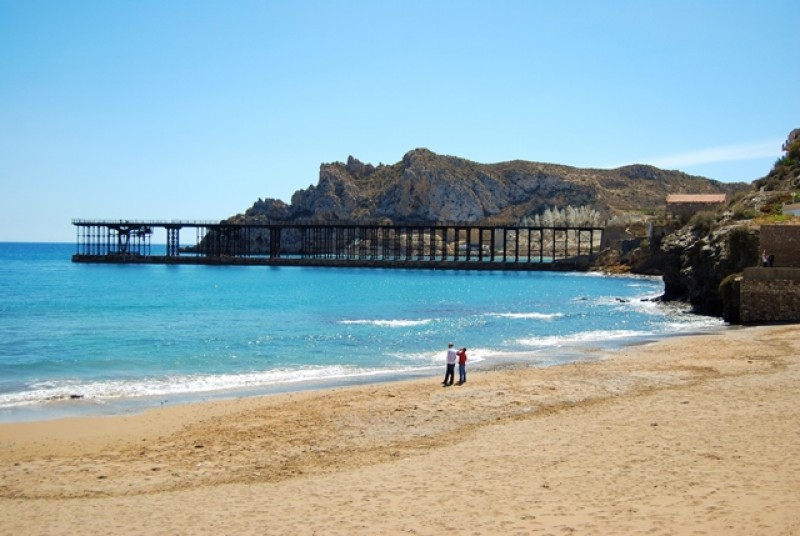Embarcadero del Hornillo visitors centre in Águilas

A monument to British railway engineering on the coastline of Murcia
(Click for the full history of Águilas)
The "British Great South Eastern Spain Railway Company" built the "Lorca-Almendricos-Águilas" railway line between 1887 and 1896 in order to transport minerals, principally, iron, from the Sierra de los Filambres in Granada to the coast, and in 1901 work began to construct a purpose-built loading dock in order to facilitate the export of larger volumes of ores. The project was designed by engineer Domingo Muguruza and overseen by company director Gustavo Guillman, and the loading dock was brought into service in 1903.
This loading dock became known as the Embarcadero del Hornillo and included not only the construction of the loading jetty which is still visible jutting out into the sea today, but also a link to the Águilas railway station on the opposite site of the rambla. This required the construction of a substantial viaduct as well as a series of loading tunnels, track and storage areas in order to process the huge volumes of minerals arriving at the loading point.
The mineral deposits were used in order to ensure that there was a constant reserve supply of minerals in addition to the quantities which arrived in Águilas every day. There were different areas for each type of mineral and the deposits were owned by the different mining concessions. Minerals would be left in these areas prior to the arrival of the ships to transport them, and carriages loaded via a "blind" tunnel to ensure the docks were loading 24 hours a day, 7 days a week.
The tunnels were three large galleries opposite the jetty, or wharf. These were a direct rail link into the railway network via the railway station, but also ran beneath the mineral deposit areas, so trucks could be filled easily from the stores above them to ensure maximum turnaround on the ships.
Of the three tunnels which were dug out, only two were actually used for rail connections. These two were 150 metres long, while the blind tunnel is 200 metres long. There are chutes in the ceiling from the bottom of the mineral deposits which lie above, which were used to load the wagons passing through the tunnels: in the central tunnel and the blind tunnel these chutes are placed in symmetrical pairs, while in the left-hand tunnel they follow a zig-zag distribution pattern.
There were also eight ventilation shafts placed along the length of the tunnels.
The view from the top of the tunnels is a spectacular one, looking out over the Bahía del Hornillo and the Isla del Fraile, and down onto the loading jetty, the Embarcadero del Hornillo below. The railway wagons rolled straight out onto the jetty, discharging into the holds of the ships below.
Nowadays visitors can walk into the complex through the tunnels and go out above them, looking down onto the mineral deposits from above. When in full operation, these vast empty spaces would have been filled with ores waiting for onward transportation.
The old mineral loading jetty was revolutionary in this area, designed to be similar to those used in Huelva and Bilbao. Two boats could be loaded simultaneously and on average 3000 tons of minerals were shipped out from Águilas every day.
The jetty is in need of major structural repair and can only be viewed from above or from the beaches alongside it.
The complex can be visited on the monthly "Route of the railways free tour" run by the tourist office or is open for tourist visits. Click here for opening times of the Embarcadero and loading area as well as other museums and monuments in the municipality of Águilas.
Click for Águilas Tourist Information Office.
Click the link to see full information about the municipality of Águilas in English: ÁGUILAS TODAY





